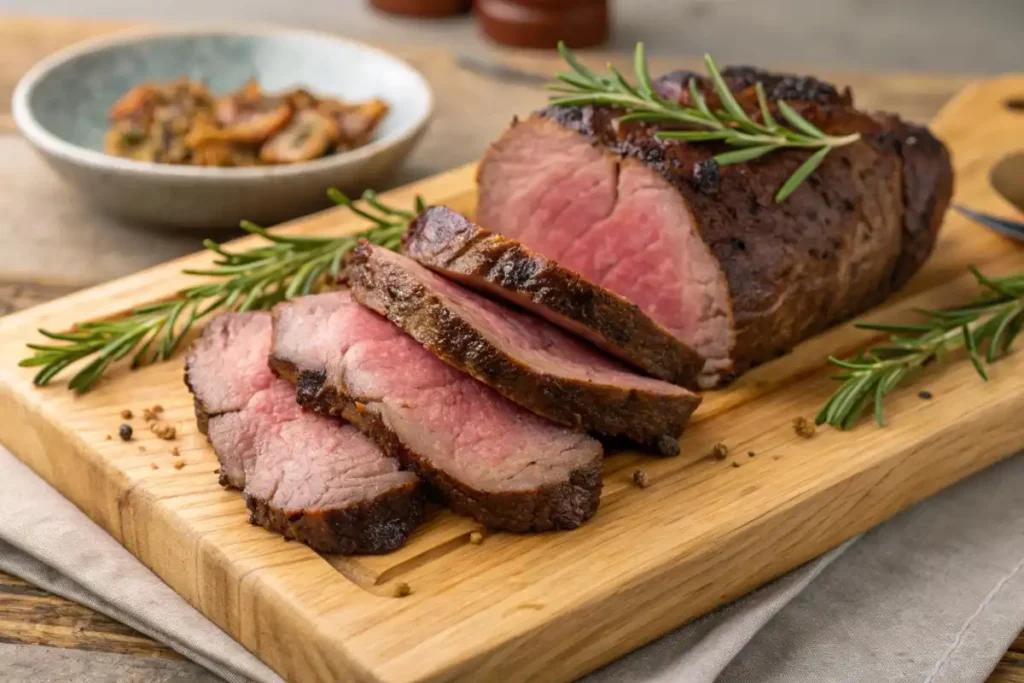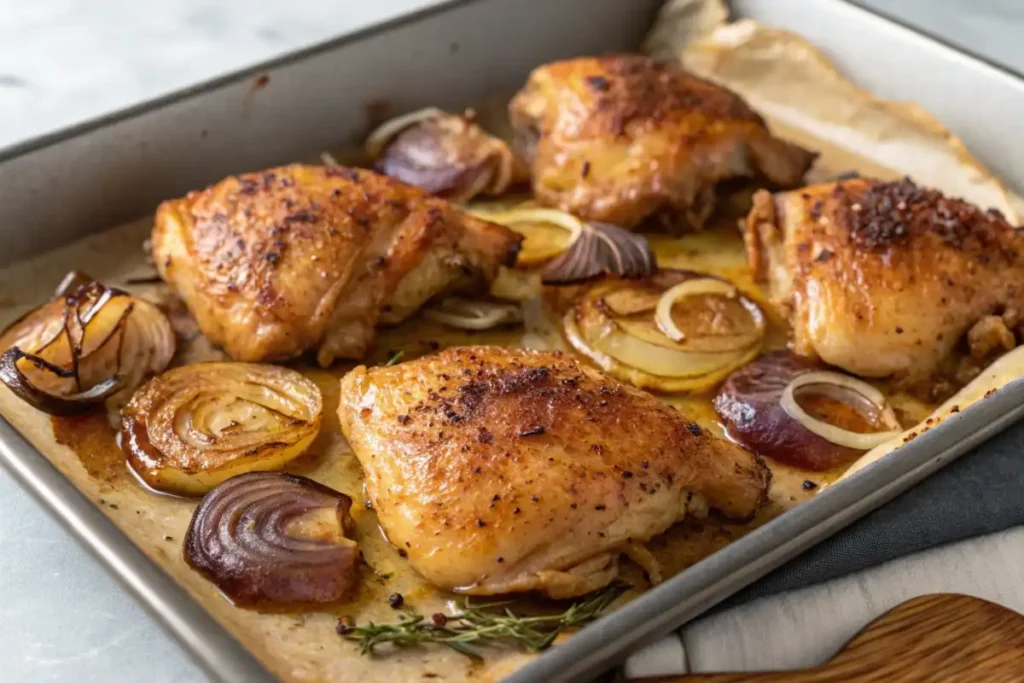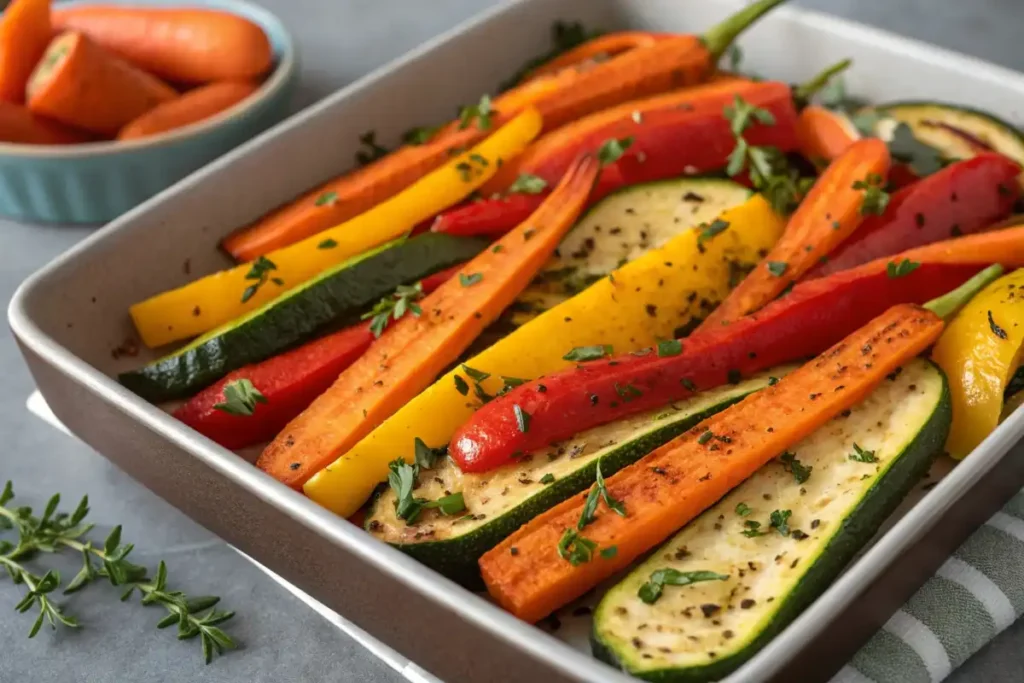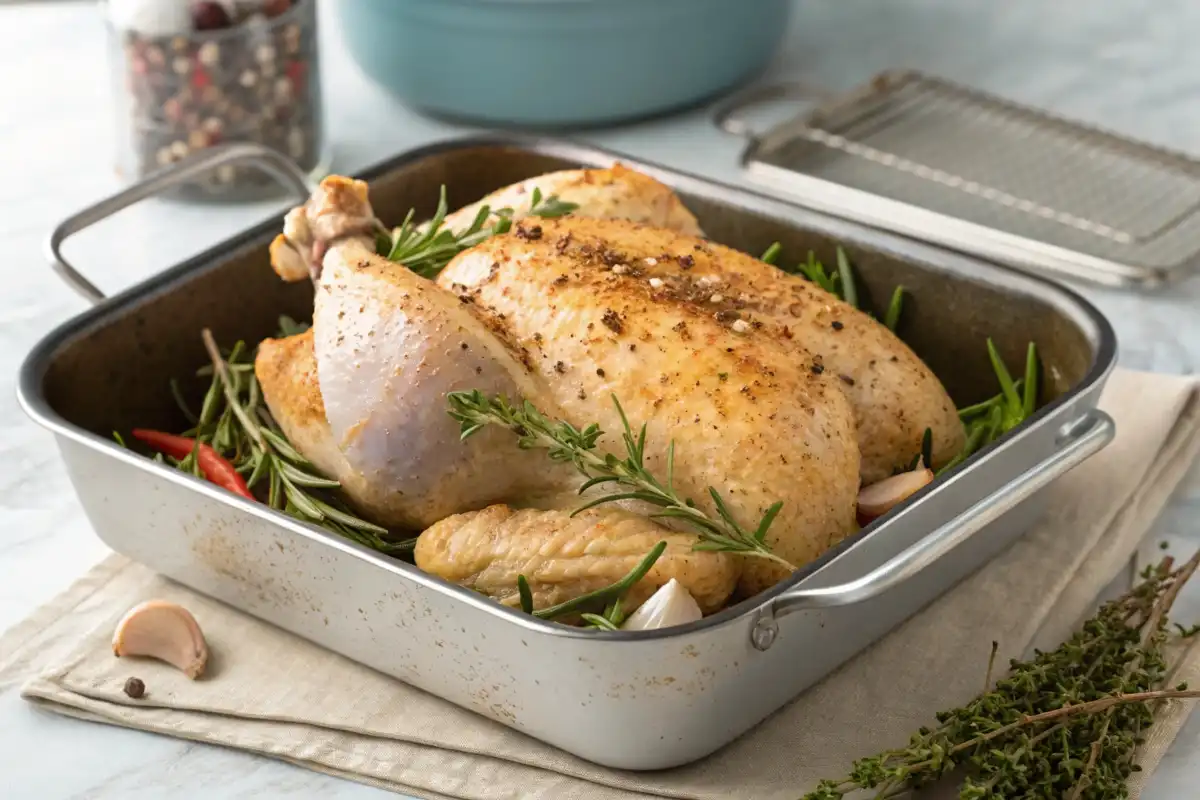Are you searching for good roasts that guarantee happy guests and satisfying meals? This listicle covers classic meats, vibrant vegetables, and expert tips for every savory craving. In other words, it’s your new go-to resource whenever you want to whip up a successful roast dinner. Get ready to discover what makes these cozy dishes so special. Grab your roasting pan, and let’s dig in!
Initial Overview: Why Good Roasts Shine on Any Table
Good roasts capture the essence of comfort food because they combine tenderness, flavor, and easy cooking steps. At the present time, home cooks crave meals that are hearty yet straightforward. In contrast to complicated recipes, roasts allow you to prep your main ingredient, season it well, and let your oven do most of the hard work.
Furthermore, roasts often fill the kitchen with an irresistible aroma. For instance, a roast chicken with aromatic herbs can instantly make your space feel cozy. In addition, roasted vegetables, such as carrots and potatoes, deliver sweet and savory notes that balance every bite of your meal. Therefore, good roasts are the perfect blend of taste and convenience.
Below, you will find 10 surefire ways to enjoy savory roasts at home. Each idea includes quick steps and flavor insights, ensuring every meal is packed with succulence. If you wish to mix and match, feel free to rotate different roasts throughout the week. Because variety keeps mealtime exciting, you can always switch proteins or pair roasts with vegetables that you love most.
The Basics of Good Roasts
Before diving into each specific roast, it’s crucial to understand general guidelines. First, make sure your protein or vegetable is at room temperature prior to roasting. This helps it cook evenly. Second, season liberally with salt, pepper, and herbs. In contrast, under-seasoned roasts can taste bland.
Third, use a roasting pan that leaves enough space for air circulation. This way, heat moves freely, and your roast cooks thoroughly. Finally, always let your roast rest before slicing or serving. In the meantime, the juices will redistribute, and you’ll avoid dryness or toughness.
1. Classic Roast Beef

If you want a dinner that tastes luxurious yet remains affordable, roast beef is a champion. Because beef retains flavors from herbs and spices, it’s an excellent base for good roasts. Opt for a top-round or ribeye roast for a tender interior. Liberally rub it with salt, black pepper, garlic powder, and dried thyme. Then place it on a wire rack in a roasting pan.
- Temperature: Preheat your oven to 325°F (about 163°C).
- Timing: Roast for roughly 20 minutes per pound until the internal temperature reaches 135°F (about 57°C) for medium-rare.
- Serving Tip: Rest your beef for at least 15 minutes. Then slice thinly against the grain. This results in tender pieces bursting with flavor.
In contrast to more elaborate dishes, a simple roast beef doesn’t demand advanced cooking techniques. Just keep an eye on the internal temperature. To demonstrate your newfound culinary confidence, serve roast beef alongside roasted carrots and a fresh garden salad for a well-rounded family dinner.
2. Succulent Roast Chicken
A succulent roast chicken is a staple in many American homes. Because chicken stays moist when cooked at moderate heat, it remains one of the most approachable proteins. Rub the chicken with salt, pepper, garlic, and your favorite herbs, such as rosemary or thyme.
- Temperature: Set your oven to 350°F (about 177°C).
- Timing: Cook for approximately 20 minutes per pound. Always check the thickest part of the thigh for an internal temperature of 165°F (74°C).
- Serving Tip: Let your chicken rest for 10 minutes before carving. This seals in the juices.
For instance, you can add hearty vegetables around the chicken in the same roasting pan. Potatoes, onions, and carrots soak up the drippings. Hence, you get a full meal in one go. In addition, leftover roasted chicken transforms into sandwiches, soups, or salads, which is a huge plus.
3. Aromatic Roast Turkey
Turkey isn’t just for the holidays. In fact, it can be a delightful weekday meal because it yields plenty of leftovers. Moreover, turkey pairs well with savory seasonings like sage, marjoram, and onion powder.
- Temperature: Aim for 325°F (about 163°C).
- Timing: Roughly 13-15 minutes per pound. Ensure your turkey’s internal temperature is 165°F (74°C).
- Serving Tip: Baste the bird with its own juices or a mixture of broth and melted butter to lock in moisture.
Eventually, you can experiment with citrus flavors, placing lemon wedges and herbs inside the cavity. In contrast to store-bought turkey meals, a home-roasted bird tastes fresher. Because turkey tends to have a milder flavor, it’s essential to season generously.
4. Zesty Roast Chicken Thighs (Bone-In)

Roast chicken thighs offer a more casual option. They cook faster than a whole chicken, yet remain exceptionally juicy. In addition, their skin often turns golden and crispy. Season bone-in thighs with paprika, garlic powder, and oregano.
- Temperature: Preheat to 400°F (204°C).
- Timing: 35-40 minutes until the meat reaches 165°F (74°C).
- Serving Tip: Squeeze fresh lemon juice over the thighs for a bright finish.
These good roasts work well in meal prep plans. Cook a batch of thighs on Sunday, and then use them throughout the week in tacos, grain bowls, or salads. Furthermore, their bold flavor means you won’t need complex sauces.
5. Herb-Infused Roast Vegetables

Roasting isn’t limited to meats. In fact, roasted vegetables can be the star of your table. Consider carrots, zucchini, bell peppers, and cauliflower. Chop them into uniform pieces, toss them in olive oil, salt, pepper, and herbs like thyme or basil.
- Temperature: 400°F (204°C) is perfect for caramelizing veggies.
- Timing: 20-30 minutes, depending on size.
- Serving Tip: Stir halfway to ensure even browning.
In addition, you can add a sprinkle of Parmesan cheese during the last five minutes of roasting. This boosts the savory factor. Roasted vegetables are a good roasts side dish for main proteins, yet they also make a filling vegetarian meal when paired with grains like quinoa or farro.
6. Savory Roast Lamb
Roast lamb is a classic choice for festive occasions. However, you can enjoy it any time you crave robust flavor. A leg of lamb or lamb shoulder suits many gatherings. Rub the lamb with garlic paste, fresh rosemary, and a drizzle of olive oil.
- Temperature: Start at 400°F (204°C) for 15 minutes, then reduce to 350°F (177°C).
- Timing: Plan 20-25 minutes per pound for a medium-rare result of 135°F (57°C) internal temperature.
- Serving Tip: Rest the lamb for about 15-20 minutes. Slice it thinly and serve.
In contrast to lighter proteins, lamb has a rich, distinct taste. Pair it with roasted potatoes or grilled vegetables. This combination yields a satisfying meal. In addition, leftover lamb can be used in wraps or sandwiches the following day.
7. Whole Roast Fish
For seafood lovers, whole roast fish is a game-changer. Because fish cooks swiftly, you’ll have dinner on the table in about 30 minutes. Popular options include trout or snapper. Season the fish cavity with salt, pepper, lemon slices, and dill or parsley.
- Temperature: 400°F (204°C).
- Timing: 15-20 minutes, depending on the fish size. Check for opaque flesh that flakes easily.
- Serving Tip: Drizzle a bit of olive oil and garnish with fresh herbs right before serving.
Moreover, the skin becomes crispy, and the meat remains moist if you don’t overcook it. Serve it with roasted cherry tomatoes or a side salad. Because of its delicate flavors, keep seasonings simple. Let the freshness shine through.
8. Roast Chicken Breasts with Vegetables
This quick and healthy idea focuses on convenience. In addition, it’s perfect for beginners because boneless chicken breasts cook fast. Place chicken breasts and mixed vegetables (broccoli florets, bell peppers, and onions) on a large baking sheet.
- Temperature: 400°F (204°C).
- Timing: 25-30 minutes until the chicken reaches 165°F (74°C).
- Serving Tip: Flip the chicken halfway for even cooking.
Furthermore, you can experiment with different seasoning blends, such as Cajun or Italian herb mixes. To demonstrate flexibility, add sweet potatoes or mushrooms. The result is a balanced, good roasts-style dinner in under an hour.
9. Roast Cornish Hens
Cornish hens are small, tender birds. They make stunning individual servings. To illustrate their flavor potential, rub them inside and out with salt, pepper, and herbs like tarragon or rosemary. Place them in a roasting dish with a bit of chicken broth at the bottom.
- Temperature: 375°F (190°C).
- Timing: Approximately 50-60 minutes. Use a meat thermometer to confirm an internal temperature of 165°F (74°C).
- Serving Tip: Present each hen on its own plate. Drizzle pan drippings over the top.
Because Cornish hens are delicate, keep the seasoning simple. You can add a pinch of cayenne pepper for subtle heat. Eventually, you’ll discover these mini roasts make any dinner feel special. In contrast to large poultry, they reduce cooking and carving time.
10. Roast Root Vegetables for a Hearty Vegan Feast
For a plant-based approach, gather root vegetables such as potatoes, parsnips, sweet potatoes, and beets. Chop them into even chunks. Toss with olive oil, salt, pepper, and a tablespoon of dried herbs. Place them in a single layer on a baking sheet.
- Temperature: 400°F (204°C).
- Timing: 35-40 minutes. Test doneness by piercing with a fork.
- Serving Tip: For added crunch, broil for 2-3 minutes at the end.
These roasted roots make good roasts that satisfy even meat-lovers. Serve them with a light sauce or vegetarian gravy for extra richness. In addition, leftover root vegetables work well in cold salads or buddha bowls the next day.
A Quick Nutritional Data Table
Below, you’ll find approximate nutritional data for a typical serving of a good roasts meal (roasted meat or poultry, plus veggies). Keep in mind that exact values vary based on portion size, ingredients, and cooking methods.
| Component | Calories | Protein (g) | Carbs (g) | Fat (g) | Fiber (g) | Sodium (mg) |
|---|---|---|---|---|---|---|
| Roast Chicken (5 oz) | 220 | 35 | 0 | 9 | 0 | 80 |
| Roasted Vegetables (1 cup) | 90 | 3 | 18 | 1 | 4 | 160 |
| Roast Beef (4 oz) | 240 | 30 | 0 | 14 | 0 | 70 |
| Roast Turkey (4 oz) | 150 | 29 | 0 | 3 | 0 | 60 |
| Roast Lamb (4 oz) | 280 | 25 | 0 | 18 | 0 | 75 |
These figures are estimates. Because everyone’s nutritional needs differ, adjust portion sizes to meet your goals. In addition, choose leaner cuts and trim off visible fat to reduce calories and saturated fat if desired.
Let’s Pause for a Quick Joke
Cooking roasts can make you feel like a culinary superhero. But remember:
Q: Why did the roast get invited to all the parties?
A: Because it was well-seasoned!
Corny, yes. But laughter pairs well with all good roasts.
Frequently Asked Questions
Q1. What potatoes are best for roasting?
Certain potatoes hold up better under high heat because they maintain a fluffy interior and crispy exterior. For instance, Yukon Gold potatoes or russets create a nice crunch on the outside while staying soft inside. In addition, these varieties are easy to find. Therefore, they’re a convenient option for everyday meals.
Q2. Do potatoes go on top or bottom of roast?
It’s often best to place potatoes around or beneath the roast if you have space in the pan. Because the drippings infuse flavor, potatoes positioned under the roast soak up savory juices. However, if you want extra crispiness, you can spread the potatoes out on a separate sheet pan. In that case, you’ll need to remove them earlier if they brown faster.
Q3. Why are red potatoes better for roasting?
Red potatoes have a firmer texture and thinner skin. Therefore, they roast without breaking down into a mushy mess. In contrast, other potatoes might become too soft. In addition, red potatoes have a slight sweetness that complements savory seasonings.
Final Tips for Good Roasts
To sum up, cooking good roasts revolves around balancing flavor, temperature, and timing. First, season generously. Second, let your chosen protein or vegetable rest before slicing. Third, keep an eye on internal temperatures. These crucial steps help ensure perfect doneness. In addition, remember that high-quality ingredients matter. Opt for fresh herbs and high-grade spices whenever possible.
For instance, try using different seasoning blends. A citrus-and-herb rub can elevate chicken, while a simple salt-and-pepper mix can highlight the natural taste of beef. Furthermore, consider experimenting with side dishes. Roasted potatoes, carrots, or other vegetables round out your meal. Because roasts bring out the best in simple ingredients, don’t overthink it.
- Resting Time: No matter the protein, allow it to rest for at least 10 minutes. Because this small step locks in juices, you’ll taste tenderness in every bite.
- Seasoning: For deeper flavors, marinate meats overnight. In contrast, a quick rub right before cooking also works for last-minute dinners.
- Batch Cooking: Roast extra veggies and proteins. This trick saves time on weeknights and provides healthy leftovers.
Eventually, you’ll master the art of good roasts through practice. Keep your pantry stocked with go-to spices and a reliable meat thermometer. Above all, have fun in the kitchen. Roasting is about creating home-cooked comfort without stress. Gather your favorite side dishes, invite family or friends, and dig into these hearty roasts. Bon appétit!
